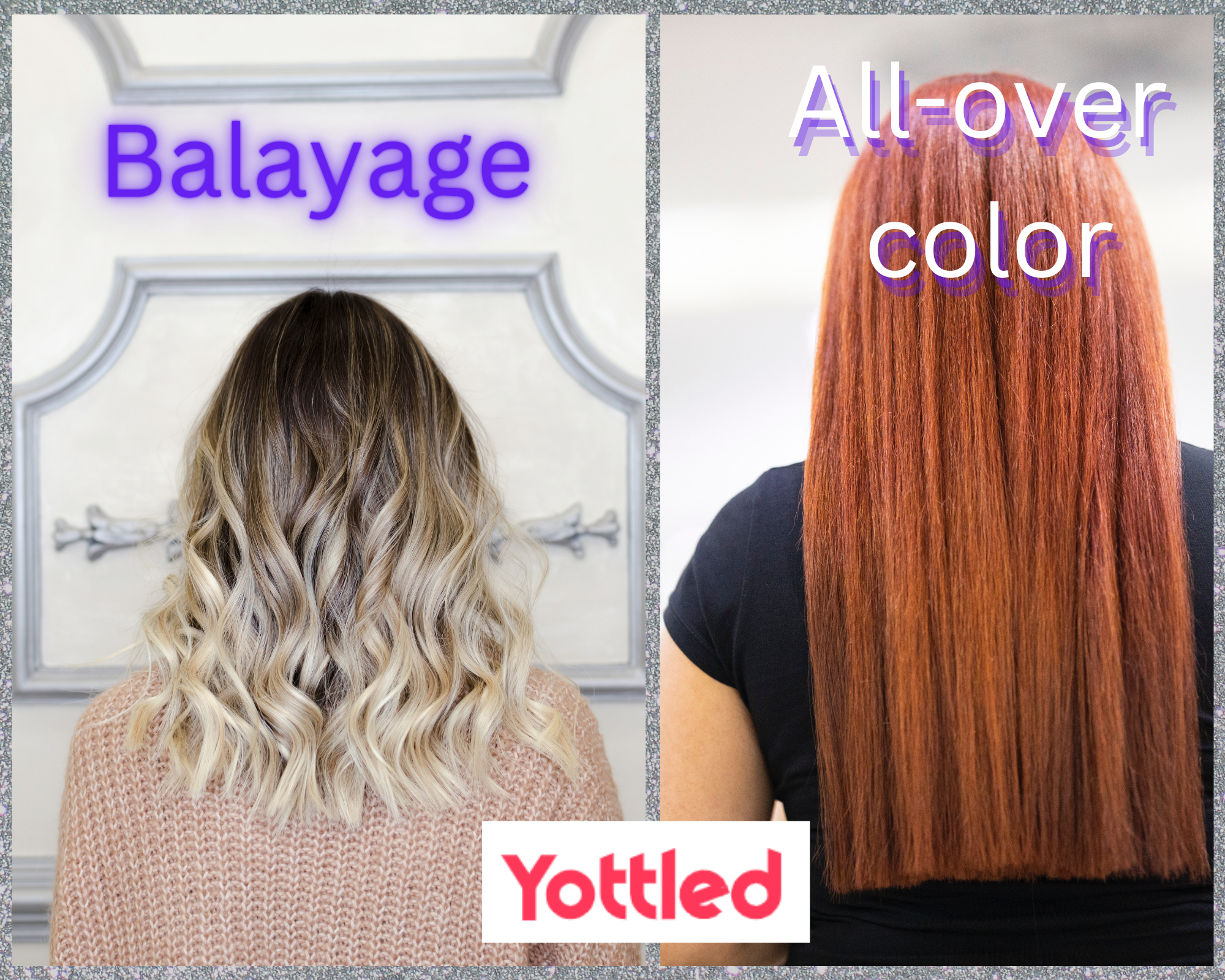Balayage Vs All-over Color: What’s the Difference?

The hair-dying industry has various types of hair-dying options that might be confusing for some people. The most popular options are highlights, all-over color, Ombré, Babylights, Sombre and Balayage. In this article, we will talk about the difference between balayage and all-over color to help you choose the right dying option for you. So, let’s explore!
Difference Between Balayage and All over Color
1. Coverage
Overall color is applied to all the hair, from roots to ends. All the hair strands are dyed with the same color. Sometimes two shades are also included to give more artistic looks. In contrast, balayage is applied from the middle layer to the bottom. In the middle, the stylist carefully selects some hair strands to dye in a way that it gives a natural transition from the original hair tone to the dyed one. The main principle of balayage is that it shouldn’t create a visible “starting point” between both tones.
Here’s how balayage vs. all over color looks like.
2. Purpose
People generally choose to color their all-over hair to get change their original hair color completely. Some people do it to hide the grey hair that comes with ageing. Balayage is done to get a stylish look with a natural, multi-tonal finish. Balayage is a trendier and new-gen hair dyeing solution than overall hair color.
3. Method
The authentic balayage is applied by hand in the freehand style. It requires a lot of experience on the hair stylist’s part to understand how to apply the color to give a natural, subtle transition. No hair brush is used. Balayage practitioners apply color directly with their hands, use cotton or sponge to give smudging effects, and use aluminium foils to keep each layer separate. All-over color is comparatively easy to apply because there is no artistic selection of hair strands and layers. Hence, it doesn’t require rigorous practice and experience on the hair stylist’s part. The hairstylist uses a standard brush and aluminium foils for all-over hair color.
4. Regrowth
One of the big differences between balayage and overall hair color is regrowth. As soon as your hair starts growing, the roots show the original hair tone. If you have done the all-over hair color, you must keep doing touch-ups to hide that color. On average, the touch-up is needed every 3 weeks for all-over hair color. While in balayage, the roots are intentionally kept in the original hair tone. Balayage is one of the low-maintenance solutions because the roots are kept in the original hair color. When new hair grows, the balayage effect still remains the same in the middle and lower parts of the hair. The hand-painted balayage lasts 22 to 28 weeks.
5. Cost
The regular balayage costs between $220 to $450. The partial balayage’s prices range between $60 to $175. Some stylists charge different rates based on hair length. While some salons have a fixed rate, irrespective of length. The all over hair color ranges between $50 to $120. Technically, less hair dye is used in balayage compared to all over hair color, but it is expensive because of its complicated technic, which requires a lot of experience and expertise from the hairstylist’s end.